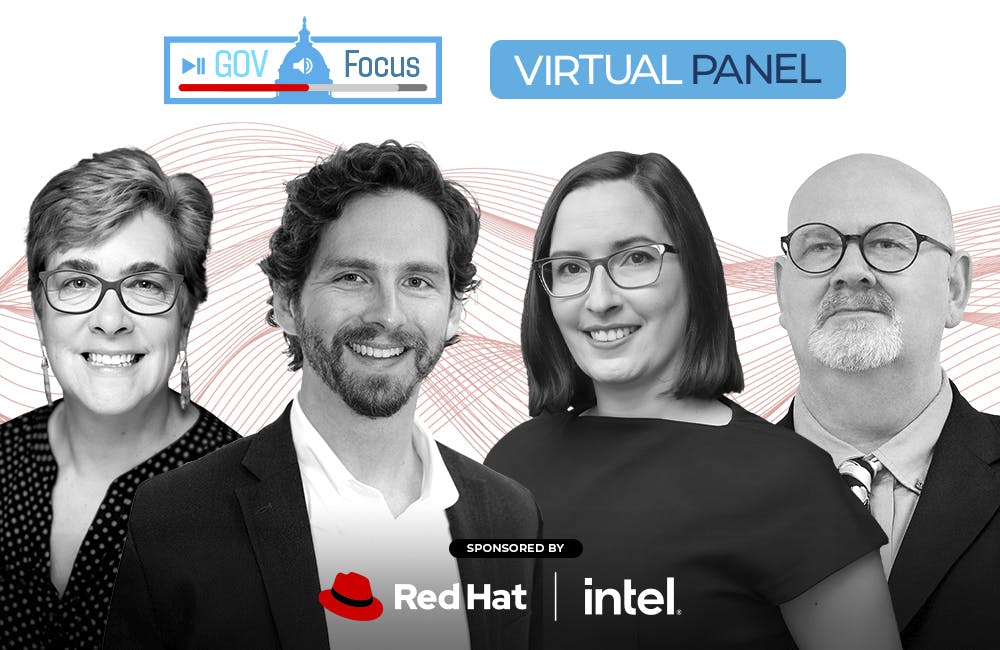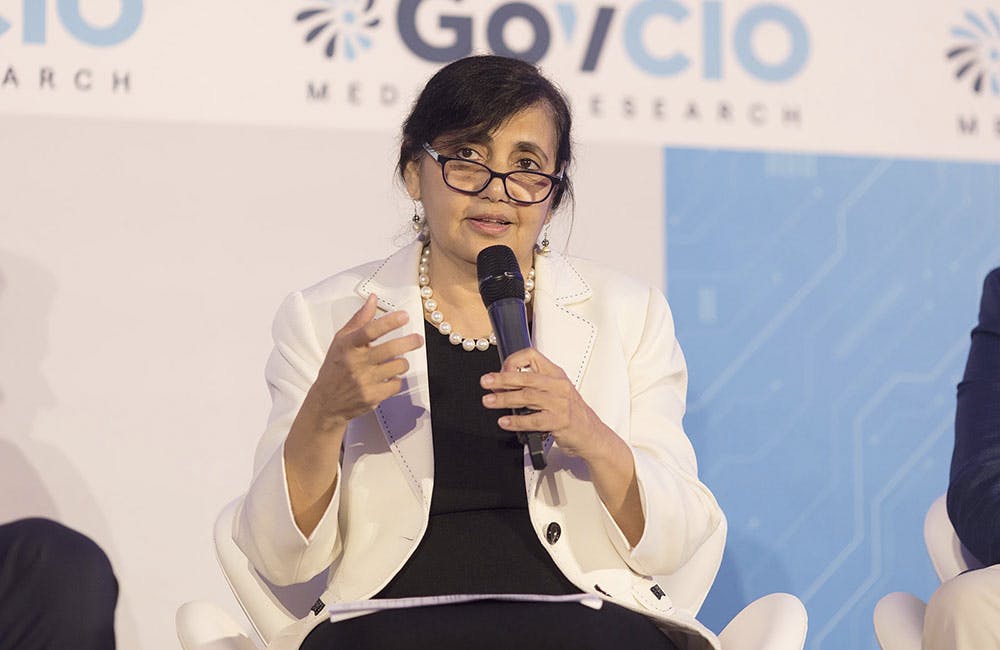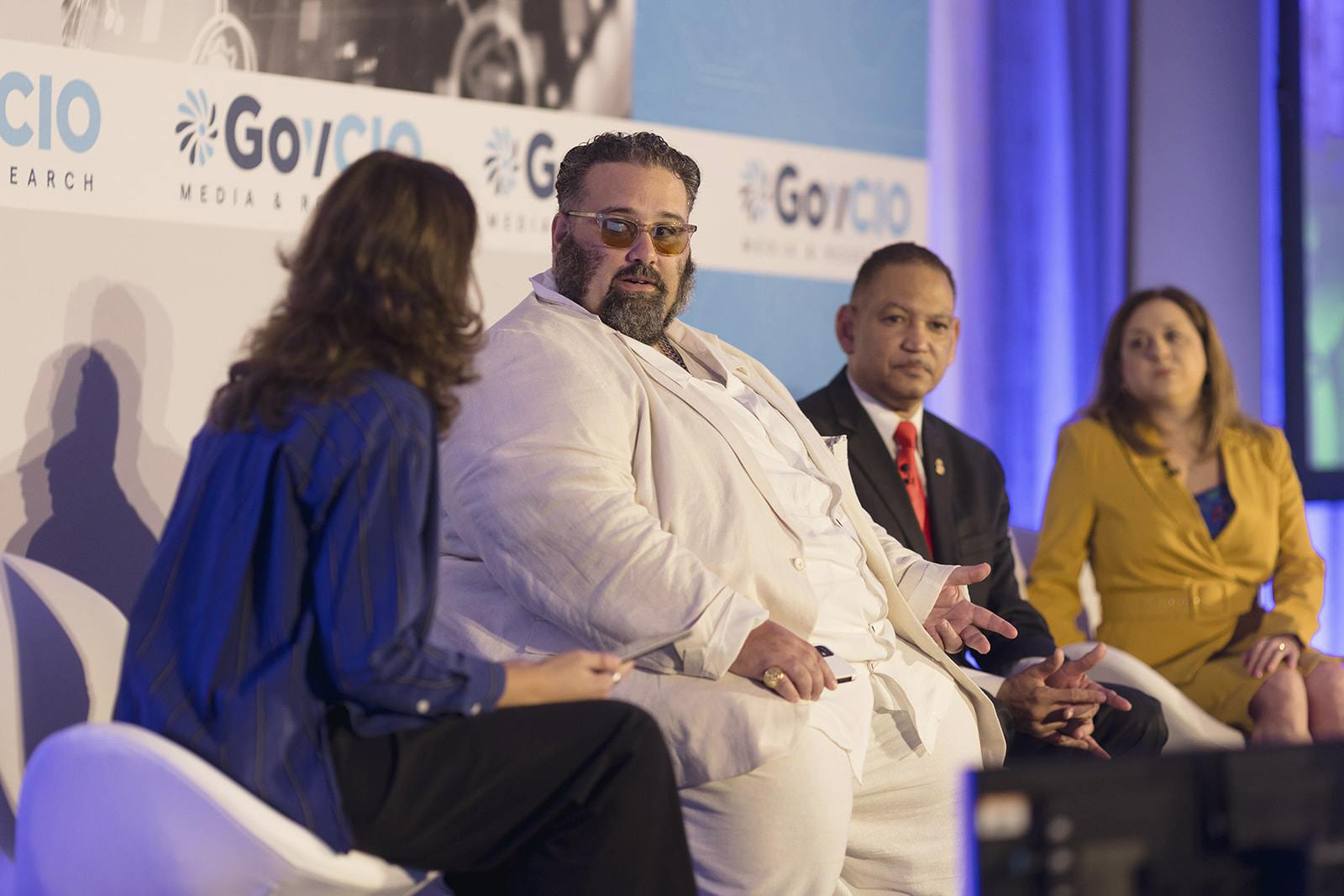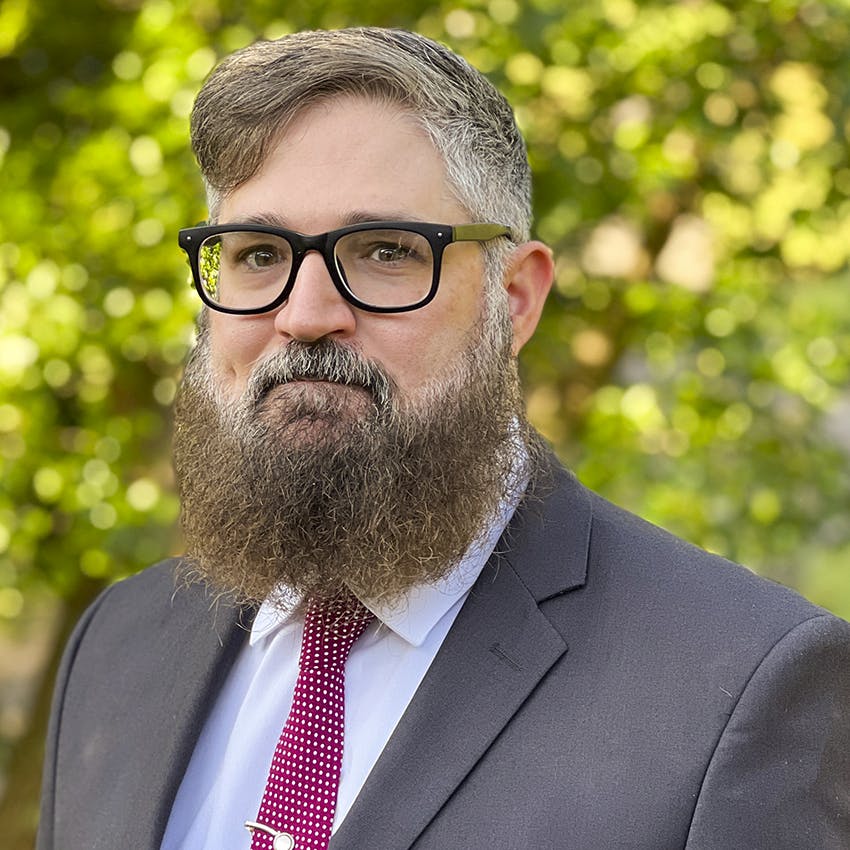Proposed DOGE Reforms Target Technology, Efficiency
The proposed Department of Government Efficiency eyes technology and strategic investments to make government more effective.

President-elect Donald Trump’s proposed Department of Government Efficiency (DOGE) sets a new technology-oriented vision for federal operations, harnessing the growth of technology to streamline tasks, modernize outdated systems and redefine efficiency in the evolving digital ecosystem.
Less than two weeks after he won the election in November, Trump announced his plans for DOGE to restructure government using technology, strategic budgeting and removing regulations to increase efficiency.
Trump named Elon Musk, CEO of SpaceX and Tesla, and Vivek Ramaswamy, businessman and candidate for the 2024 Republican presidential nomination, to head the commission. Musk and Ramaswamy have both cited technology as an avenue to cost savings in government, in addition to large workforce cuts and program consolidation.
“The broad use of technology and technology improvements across the federal government are not only going to be important [but are] necessary in order to actually get the job done right now,” Ramaswamy said during the Aspen Security Forum earlier this month in D.C.
The DOGE Mandate
Musk and Ramaswamy explained their mandate in a Wall Street Journal (WSJ) piece in November. They will lead a group to pursue “three major kinds of reform: regulatory rescissions, administrative reductions and cost savings,” according to the piece.
“DOGE will work with legal experts embedded in government agencies, aided by advanced technology, to apply these rulings to federal regulations enacted by such agencies,” they wrote. “DOGE will present this list of regulations to President Trump, who can, by executive action, immediately pause the enforcement of those regulations and initiate the process for review and rescission.”
Illumio Federal CTO and former USPS Office of the Inspector General CIO Gary Barlet said that Musk and Ramaswamy both come to DOGE with the correct attitude toward government technology and budgeting.
“Being outsiders coming in they may be looking at government going, ‘This is insane. We have to do something. … There’s got to be ways of doing things better,’” Barlet said in an interview with GovCIO Media & Research. “I think that we’re going to see a really renewed focus on technology inside of government.”
In addition to the WSJ piece, Ramaswamy and Musk have floated other, more specific goals for federal budgeting.
Before the election, Ramaswamy told the Lex Fridman podcast that a 75% reduction in the federal budget was realistic. Musk suggested in December that Congress not pass any bills – and thus fund the government – before inauguration. He also mused on X about cutting specific government agencies.
Both houses of Congress need to pass a law through to remove any agency, it cannot be done by executive action alone nor by DOGE suggestion.
Jenny Mattingley, Partnership for Public Service (PPS) vice president for Government Affairs and former executive director of the White House Performance Improvement Council, noted that DOGE will need to recognize that government and industry have different money restrictions.
“In the private sector, you control your budget. You can control where it happens. I think there’s a fundamental misunderstanding that government is dealing with budgets that are given to them,” Mattingley said in an interview with GovCIO Media & Research. “They’re both authorized and told to do certain things, and then they’re funded for certain things, and they can’t just move things around to find those savings or to focus in different areas without congressional approval.”
Technology in Government Reform
Government reform via regulatory cuts is not new. For example, the most Clinton-Gore administration’s 1993’s National Partnership for Reinventing Government eliminated more than 100 public programs, downsized more than 250,000 federal jobs and consolidated hundreds of agencies and responsibilities. The initiative also encouraged the emergent internet and associated technologies as ways to more efficiently spend taxpayer dollars.
The Obama administration cited technology and workforce cuts as a way it eliminated “waste” in government within its Presidential Management Agendas, and the Biden administration touted its successes “in advancing sustainability, equity and efficiency” in its final reflections on the PMA.
Mattingley noted that modernization has been a goal of many government initiatives over decades, including performance.gov, for which she was a key leader.
“They all share some interest in ‘rightsizing’ the federal workforce. In this one, certainly we’ve got people coming from a tech perspective,” Mattingley said. “Coming in with this tech focus, there’s a lot of modernization that could happen.”
Defense Business Board Member, CEO of Celero Strategies and National Academy of Public Administration Vice Chair Stan Soloway said that technology was part of nearly every government reform initiative since the Clinton administration, which DOGE can capitalize on.
“[Conversations] around technology and the use of technology and digital transformation, that stuff continued. … The question is: do we see that path and that process accelerated, which definitely needs to be accelerated and broadened?” Soloway told GovCIO Media & Research in an interview. “It’s not just about IT, it’s about how we use IT.”
AI and Modernization Avenues to Efficiency
Artificial intelligence can automate tasks and provide a tech-centric efficiency solution at agencies, Barlet said, but security can’t be lost on moving toward AI implementation.
“You’ve started to see a pendulum swing of a lot of government officials talking about AI and not necessarily talking about security as much over the recent history,” said Barlet. “There’s still some work to be done in the security world before we get too far down the AI path.”
Ramaswamy said that the DOGE will look at AI just as any other project to optimize taxpayer investment, but that it is not a panacea. DOGE will not “fetishize one tool” like AI, he said during the Aspen Security Forum.
“I’m resisting the AI illusion,” added Ramaswamy.
AI and modernization are ongoing targets for agencies across government for better mission delivery. Agencies run outdated systems and hardware too often, Soloway said, and make sacrifices in technology to stay within budget constraints.
“We have a punitive [technology] budget that has investment, but at the end of the day, that five-year-old phone will be fine, right?” Soloway said.
Too many systems, hardware and software are outdated at agencies, Dave Hinchman, director in GAO’s IT and cybersecurity team, told GovCIO Media & Research in August. Updating old systems – particularly within the cybersecurity context – adds to the budgetary weight, he said.
“We have a lot of systems that are around for a very long time, and they’re expensive in part to operate because they might run on older programming languages, older technology, but you’re also trying to slap cyber on these things were they weren’t, maybe built with cyber in mind, and so that’s a heavy lift as well,” said Hinchman. “Getting the government away from the legacy IT systems onto newer platforms, modern technology that much more easily adapt to changing cyber environments.”
Cybersecurity, according to Barlet, will be an emphasis of the new administration because of the Trump campaign’s own experience.
“The incoming administration was itself the target of attacks. It probably gives them a slightly different perspective, because they realize that those attacks are probably going to continue,” said Barlet.
DOGE set its sights on modernization as an easy path for cost savings. Ramaswamy said that modernization in government is a potential place for efficiency across agencies.
“A basic modernization of the software, of the technology, of the rails on which the federal government’s information actually flows – it has low hanging fruit that I don’t care if you’re Republican or Democrat, it’s going to strictly improve the effectiveness with which the taxpayer dollar is actually spent,” he said at the Aspen Security Forum.
Soloway warned that modernization needs investment to provide efficiency and effective implementation.
“We kind of know and have studied to death what it’s going to take to realize modernization and digital transformation. There are models out there,” said Soloway. “We also know what we haven’t done to make those models really optimize: we haven’t made investments.”
DOGE leaders are correct to identify modernization and tech as essential, Barlet added.
“Government has this huge tech deficit, and that tech deficit needs to be paid up in order for it to be able to take advantage of some new, modern things that will just naturally bring about some efficiencies and effectiveness across government,” said Barlet.
Soloway added that implementation of projects like cutting programs or replacing old systems are far easier said than done. When DOGE begins its work in earnest, Soloway said, it will be critical to discern if the commission understands the federal IT modernization challenges against the rhetoric of Trump, Musk and Ramaswamy.
“Just getting better technology [isn’t everything]. If you don’t change the plumbing behind the technology and the processes, you’re not really optimizing anything,” said Soloway. “Do we have an accelerated version of that, or do we have something that’s much more disruptive in the negative sense because of this that reflects the DOGE rhetoric more clearly?”
Strategic Investments to Drive Efficiency
Mattingley said that her time working on performance improvement at the Office of Management and Budget showed her that investment is necessary to improve government efficiency and efficacy.
“But there are an awful lot of the management functions – whether that’s your performance offices, your human capital offices, your IT offices – that gave traditionally been underresourced and underinvested in,” Mattingley said. “We could do more with performance, and we could do more with … mission-enabling functions if we actually invested in policy and programs important to the mission and the agency.”
“The bigger frustration I hear is that we don’t have the capacity in some of these places to do the work at the level that agencies would like to,” she added.
Ramaswamy said at the Aspen Security Forum that DOGE is not simply about cuts, but that the correct investments are critical.
“I want to spend more on what actually advances the goals of the federal government,” Ramaswamy added.
Politicians, federal officials and most others agree that good, efficient government is paramount. Mattingley cited PPS polling, for example, saying that the public wants effective government and solutions.
“The solutions are always much more complicated, particularly in government … People, over and over, overwhelmingly want government that works for them. They want a nonpartisan civil service,” said Mattingley. “It’s reconciling what’s easy to say and gets attention versus the hard work to actually fix it. We keep trying to push on the solutions piece, what is the outcome you’re looking for, and how do you build backwards from that?”
Modernization, reform and cutting waste, fraud and abuse are popular and needed, Soloway added.
“There is a well-documented need for major, transformative reform in government. We have known this for decades. The need to do this is very real,” said Soloway.
DOGE, according to Mattingley, will need to examine all possible roads – not just budget cuts – to better efficiency, including investing in the workforce and technology.
“That might take investment. It might take talent,” she added. “It might mean cutting in other places.”
Unfunded mandates run afoul of the law, putting non-political officials in difficult situations. Barlet said that there could be friction between DOGE and program managers.
“There’s a difference between things that come out in certain orders or directives versus things that are placed in law. And sometimes they conflict with each other, which puts leadership inside of government in a weird position,” said Barlet. “They’ve got to explain it to their boss who asks, ‘why haven’t you done X?’ And my answer is ‘Because it’s illegal.’”
Sometimes, officials will need to make decisions that won’t jell with DOGE or administration priorities, Barlet said.
“DOGE can say, ‘I want you to go do something.’ That sounds great, but if you don’t give me the money to go do that, I don’t know where you think it’s going to come from sometimes,” said Barlet.
Soloway said that DOGE’s its success or failure will depend on concrete goals, not just rhetoric.
“There is a strategic assessment that needs to be done, driven by not just rhetoric, but actual objectives. And the objectives aren’t necessarily that we hear now,” said Soloway.
This is a carousel with manually rotating slides. Use Next and Previous buttons to navigate or jump to a slide with the slide dots
-

AI Foundations Driving Government Efficiency
Federal agencies are modernizing systems, managing risk and building trust to scale responsible AI and drive government efficiency.
43m watch -

Inside DOD’s Push to Grow the Cyber Workforce Through Academia
Diba Hadi gives her first interview since becoming principal director of the DOD’s Cyber Academic Engagement Office.
15m listen -

Agencies Tackle Infrastructure Challenges to Drive AI Adoption
Federal agencies are rethinking data strategies and IT modernization to drive mission impact and operational efficiency as new presidential directives guide next steps.
5m read Partner Content -

Generative AI Demands Federal Workforce Readiness, Officials Say
NASA and DOI outline new generative AI use cases and stress that successful AI adoption depends on strong change management.
6m read -

The Next AI Wave Requires Stronger Cyber Defenses, Data Management
IT officials warn of new vulnerabilities posed by AI as agencies continue to leverage the tech to boost operational efficiency.
5m read -

Federal CIOs Push for ROI-Focused Modernization to Advance Mission Goals
CIOs focus on return on investment, data governance and application modernization to drive mission outcomes as agencies adopt new tech tools.
4m read -

Fed Efficiency Drive Includes Code-Sharing Law, Metahumans
By reusing existing code instead of rewriting it, agencies could dramatically cut costs under the soon-to-be-enacted SHARE IT Act.
5m read -

Data Transparency Essential to Government Reform, Rep. Sessions Says
Co-Chair of the Congressional DOGE Caucus Rep. Pete Sessions calls for data sharing and partnerships to reduce waste and improve efficiency.
5m read -

DOD Turns to Skills-Based Hiring to Build Next-Gen Cyber Workforce
Mark Gorak discusses DOD’s efforts to build a diverse cyber workforce, including skills-based hiring and partnerships with over 480 schools.
20m listen -

Trump Executive Order Boosts HBCUs Role in Building Federal Tech Workforce
The executive order empowers HBCUs to develop tech talent pipelines and expand access to federal workforce opportunities.
3m read -

Navy Memo Maps Tech Priorities for the Future Fight
Acting CTO’s memo outlines critical investment areas, from AI and quantum to cyber and space, as part of an accelerated modernization push.
5m read -

DOD Can No Longer Assume Superiority in Digital Warfare, Officials Warn
The DOD must make concerted efforts to address cyber vulnerabilities to maintain the tactical edge, military leaders said at HammerCon 2025.
4m read
















